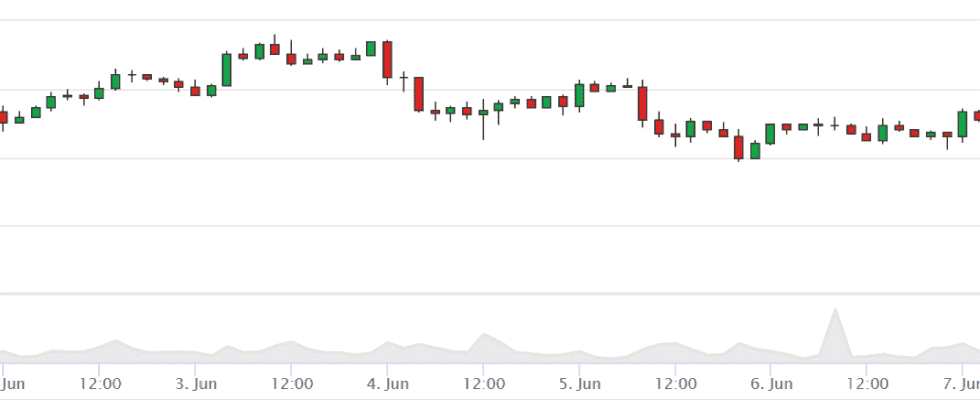Bears and bulls fight an open-face duel. However, the Hodlers are currently powerless against the sales trend on the crypto market.
A wave of sell-offs hit the entire crypto market overnight. In just 24 hours, total market capitalization slumped 10 percent to just over $ 1.5 trillion. It has also set the Bitcoin rate back in the double-digit percentage range. At the time of going to press, the crypto reserve currency is just above $ 33,000. Compared to the previous week, the BTC rate slipped 11 percent into the red.
The daily performance of some top altcoins looks even darker. Ethereum (ETH), like Bitcoin, has hit a 10 percent discount, Binance Coin (BNB) and Dogecoin (DOGE) are falling 13 percent. Cardano (ADA) and XRP are not doing much better with each 11 percent decline, while the bottom of the ten largest cryptocurrencies, Polkadot (DOT) and Uniswap (UNI), are struggling with losses of between 12 and 15 percent.
Bitcoin in the field of tension
The spontaneous crypto break-in is probably less that verbal derailments of an ex-president owed, rather than the result of a general lack of orientation in the market. Since the crash in mid-May, the market has been waiting for clear impulses – in vain. Bitcoin has not been able to make up any substantial ground since then, despite brief outliers, and continues to move sideways with the usual fluctuation range. The rise of BTC dominance did not last long. At 41 percent, the share of Bitcoin market capitalization in the overall market is just above the level to which it fell during the Flash Crash.
Also the current one Week on Chain Report von Glassnode paints a divided mood. The crypto market is moving in an aimless transition and has typical characteristics of both a bull and a bear market. The current decline in network activities speaks in favor of the latter. According to Glassnode, “on-chain demand has slowed significantly”.
The number of active Bitcoin addresses fell by 18 percent to 0.94 million during the latest market crash. That sounds dramatic. Compared to the market slump in 2017, however, the decline is only half as large. In addition, the number of active BTC addresses has kept a constant level of 1.15 million addresses daily since January of this year.
As a consequence, the trading volume processed via the Bitcoin network has also decreased significantly. In the past two weeks, the volume has decreased by 65 percent. Only the 2017 market slump shows a comparably large decline. At that time, the trading volume fell 80 percent over a period of three months.
However, when it comes to the addresses that hold a minimum amount of Bitcoin, the situation looks much less bleak. Although the number has fallen by 1.2 million addresses, it is only three percent away from the all-time high. Compared to 2017, this is “a relatively small net change”.
BTC redistribution
In contrast, there is an upward trend on the Hodler side. After a sell-off phase, “the net change in the LTH supply (Long-Term Holder) is now in a steady upward trend”. In other words: long-term investors take advantage of the lull in prices and “begin to accumulate again”.
Hodlers, i.e. those who hold the Glassnode definition according to Bitcoin for more than 155 days, now have 58 percent of the circulating supply, a total of 10.9 million Bitcoin. That is around 2.3 million Bitcoin more than at the peak in 2017.
In the long term, the signs point to growth, even if the current mix of declining Bitcoin addresses and falling trading volumes is putting a bearish light on medium-term market performance. In addition, there are institutional investors who take profits with them and thus also create pressure to sell. According to Coinshares $ 141 million was drawn from Bitcoin investment products in the last week alone.
